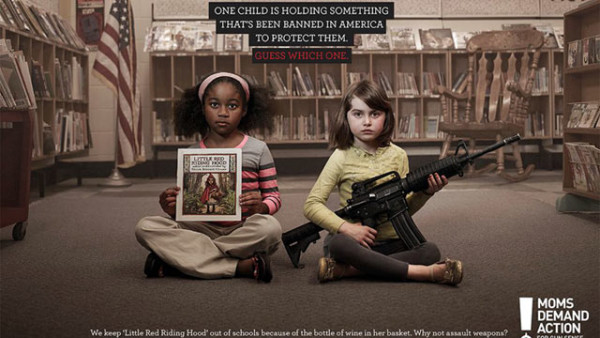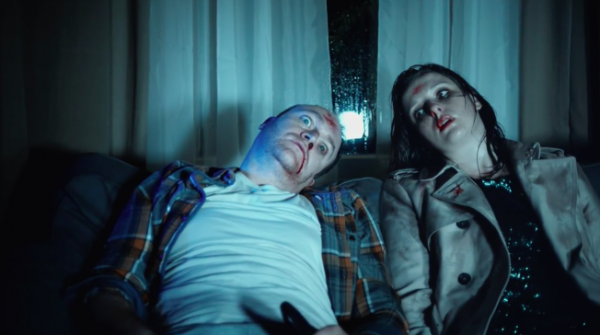
photo by Alex Lear
I Sing Because…
Amid the weariness of work day’s end, Sarah-Bell savored the quiet of oncoming twilight. At last, she could momentarily take it easy, unhurried. And she was grateful for small blessings.
Lilting into the breezeless amber of the October evening, a mesmerizing wordless song flowed from Sarah-Bell’s full, plum-colored lips as she plodded down the dusty lane. Her ankle-length, thorn-tattered, sweat-soiled skirt swished with each step.
Six-foot-four-and-a-half-inch, one hundred-eighty-seven pound Jim One-Toe, deftly dragging his maimed left foot, hobbled beside Sarah-Bell. He had a pretty fair voice himself.
One-Toe smiled in admiration of the way Sarah-Bell made each phrase of her improvised reel end on a little upward swoop that just naturally made a man feel good.
“Sarah-Bell, you sing so pretty. Can I be your man?”
Sarah-Bell furtively peeked over at One-Toe, smiled and immediately refocused her gaze on the last visible tip of the orange sun swiftly falling behind the nearly clean-picked field of cotton plants.
“One-Toe, you know I got a man.”
“But he don’t come to you all the time,” One-Toe retorted. A quick grin of near perfect white teeth flashed across the dimpled midnight of his handsome blue-black face.
Almost two good moons had passed since anybody had seen Mule-Boy visiting Sarah-Bell. Gathering was most over, Mule coulda been sold off by now—everybody knowed Master Gilmore over to the nearby plantation was good for sending you down the river at the drop of a hat.
Sarah-Bell scrutinized the squinting sincerity of One-Toe’s slender eyes. “It ain’t that he don’t. He can’t co…”
Suddenly interrupting herself, Sarah-Bell deftly hiked-up her skirt as she stepped around a fresh pile of smelly horse droppings. Then, while shooing away a fat, green and black, fly with a quick fan of her much-pricked, field-toughened hand, Sarah-Bell continued her conversation, “…and you couldn’t be with me every night neither, that is, if’n I was to even let you come by at all.”
One-Toe was encouraged that Sarah-Bell was at least considering the merits of being with him. He spyed a brief glimmer of interest smoldering in her eyes as she announced her decision, “Naw. I don’t think so, One-Toe. I thinks I can wait.”
“Yes, m’am.” One-Toe was disappointed, but not discouraged. He had plenty mo’ days to blow gently on the spark he glimpsed in Sarah-Bell’s pecan-shaped eyes. He reckoned harvesting the love of a woman like this was worth a long season of planting and weeding.
“But if you was to get tired a waiting. I would come. You know I would. Like a bird to the nest. I would come to you every night I could.”
“Which make you no different from my far-away man who come to me every night he can.”
“Well, don’t forget I’m closer to the nest. I can get to you quicker than him, even if’n I ain’t got but one good foots,” One-Toe joked. Sarah-Bell grinned as One-Toe made fun of his own infirmity.
She liked his gentle humor but she didn’t feel a need for another man climbing on her just now, even a fine man like One-Toe.
For a few seconds they exchanged knowing glances and allowed their eyes to speak for them. Then, while holding her hand palm side out, Sarah-Bell gracefully waved to One-Toe and spoke in a husky half-whisper as she strolled on, “Good night, brotha One-Toe.”
One-Toe peered longingly at the broadness of Sarah-Bell’s back and the ampleness of her hips. He looked til his imagination was as full as it could stand to be. One-Toe wanted that pretty-singing woman. He had seen a bunch of women who was face-prettier, but he had never heard no one or nothing, neither woman, man, child or bird, what sang prettier than Sarah-Bell.
One-Toe had been thinking so hard about holding Sarah-Bell in his huge arms he missed catching sight of Chester Browne squatting nearby Sarah-Bell’s door. When her singing faltered and then abruptly fell silent, One-Toe quickly surveyed the area to see what disturbance had stilled Sarah-Bell’s song. One-Toe glared at Chester. Everybody knowed what a driverman in the lane after hours waiting by a woman’s door meant.
One-Toe spit into the dust, turned and drug himself into the bitter barreness of his resting room. Shortly thereafter One-Toe heard the thudding shuffle of Chester’s horse moseying past the open doorway as Chester and Sarah-Bell rode out the lane. A high-pitched whinny from the horse taunted One-Toe, but One-Toe refused to look at the too-familiar abduction.
Chester wasn’t talking, and Sarah-Bell wasn’t singing.
The chomp chomp chomp chomp of the sorrel’s hooves echoed against the mud-caked wall of One-Toe’s sleep space and reverberated inside One-Toe’s skull.
One-Toe forcefully buried his face into the gritty dirt floor and stifled an urge to say something, to say anything; a word, a sound, call her name, something.
Sarah-Bell’s silence tormented One-Toe. He would gladly let them ax-chop his good right foot if-in he could visit Sarah-Bell; Chester or no Chester. Naw, if-in he had a cooing dove like Sarah-Bell to share nights with, he wouldn’t even dream of running again. He would stay and comfort her.
It was nearly an hour later before Chester had finished his business. Chester never kept any washing-water in his cabin, and Sarah-Bell had not even dared think about going down to the master’s well, so all she could do was wipe herself with her skirt tail before she set off to walking back.
Despite her general habit of immediately forgetting the weight of an overseer hovering over her and thrashing into her, Sarah-Bell found herself mulling over her plight. Her thoughts were accompanied by the stark crunch of her footfalls on the loamy trail.
Maybe, if-in it proved necessary and she didn’t wait too long, maybe Sarah-Bell could brave a trek over to Gilmore’s and plead with Mama Zulie for some womb-cleaning chawing roots. Sarah-Bell paused and fleetingly hugged herself. I sure hope nothing that drastic is needed. Probably not. Her regular bleeding had just stopped a day or so ago.
As Sarah-Bell pushed determinedly on a trivial worriation nagged at her. Even though she was aware that Chester’s drool could do her no harm, it sure was a mighty aggravation the way the taste of Chester’s nasty kiss sometimes seemed to stay in her mouth for days. Luckily, on this particular night, he had mostly wanted to suck at her nipples rather than her lips.
Plus, he had come quickly enough. It hadn’t been too long fore a spent and drowsy Chester dozed off and Sarah-Bell had been able to scoot from under him, slip off his pallet and proceed to walking the three-quarters a mile back to the lane.
By the time she was most halfway there Sarah-Bell had managed to bury Chester’s assault and summon up a plaintive song to soften the knot of jumbled sorrow resting heavy in the bottom of her stomach.
Shortly, for the second time, the soles of Sarah-Bell’s thickly-callused feet felt the well-worn familiarity of the lane’s path. Sarah-Bell was welcomed back by the sleeping-sounds of her people. Snores. Whistles. Sobs. Groans. A few moans from someone sick, or was it from someone really tired, or maybe both.
Sarah-Bell was too exhausted to stumble fifty more yards down to the creek for to wash herself. She would do that in the morning. And though she was hungry, she was also too fatigued to gnaw on the piece of hardtack secreted deep in the pocket of her skirt. Right now she needed to lay down by herself and seek the solace of sleep so she could disremember the dog-odor of Chester’s hair she had endured when he had been slobbering on her breasts. It was funny how that foul smell lingered in her consciousness. Seems like smell and taste had mo staying power than the abuse of touch.
Sarah-Bell’s sharp ears caught the faint sound of some animal moving in the woods. Judging from the swift lightness of the rustling coming from the bushes, she guessed it must be a rabbit. An owl hooted. Sarah-Bell wordlessly empathized with the prey–run brother rabbit, less you be somebody supper.
Times like this Sarah-Bell wished she was brave enough to hightail it like One-Toe had done. Maybe she would make it to Mexico, which is where One-Toe said he had been headed. Sarah-Bell thought of what One-Toe had declared when they brought him back: Some gets away, some don’t. Getting free was worth the risk, worth losing some of a foot.
She flinched at the thought of so permanent a loss. Even though she had survived more than her share of suffering, Sarah-Bell still didn’t know if she could stand one of her limbs being mutilated or cut away.
Sarah-Bell was too tuckered out and emotionally drained to do anything more than collaspe into her doorway. She didn’t even crawl over to check on her children balled together in slumber beneath a patchwork spread of sackcloth and shirt pieces. No sooner her dark-haired head nestled onto the curved comfort of her pillow-stone, a weary Sarah-Bell was dead asleep.
The next day in the pale dim of half-dawn morning light only one child sat where two usually fidgeted. Sarah-Bell’s heart dropped. “Where Suzee-Bell?”
“Them took her,” Johnny-Bell replied.
Was no need to say who “them” was. Was no need to ask “where” they took her.
We ain’t got nothing but each other, and they won’t let us hold on to that, Sarah-Bell’s insides roiled with anger. Both man and God was unfair. Man for what he was doing. And God for allowing men to act the low down way they did. Sarah-Bell knew Johnny-Bell would be next. She knew it just as sure as she knew a snake would eat an unprotected egg.
Johnny-Bell was her fifth child.
“What’s yo name, boy?”
“Johnny…” the child stuttered frightened by the hissed intensity of his mother’s question.
“Naw. Yo name Johnny-Bell. BELL. You Johnny-Bell. Yo brothers is Robert-Bell and Joe-Bell. Your sisters is Urzie-Bell and Suzee-Bell. No matter where they cart you off to, no matter what they call you by, you remember the name yo mama give you. And if you ever hear tell of yo brothers or yo sisters, you go find ’em if you can. But you remember ’em even if you can’t find ’em. You remember yo people. You hear me?”
“Yes, mam.”
“Say, yes, Sarah-Bell. Don’t mam me. Call me by my name. Sarah-Bell.”
The confused four year old wet himself. He had never heard his mother speak so harshly to him; but he didn’t cry.
When she realized how hard she was shaking him, Sarah-Bell softened her grip on Johnny-Bell’s shoulder. He was just a scared little boy, and her rage wasn’t making this crisis any easier for him. She could feel currents of fear in the heavy trembling racking his little body, which was twitching like a throat-cut calf at slaughtering time.
Within seconds Sarah-Bell reigned in her emotions, mustered up her fortitude, and tenderly enfolded Johnny-Bell into the comforting shelter of her bosom. They swayed in mutual anguish as she sought to rock away both his fear and her grief.
Instinctively she handled her perdicament as best she knew how. Within seconds of hugging Johnny-Bell, Sarah-Bell was breathing out a long-toned lullaby and anointing the reddish-brown hair of her son’s head with song-embellished kisses.
And she didn’t loosen her embrace until she heard the rooster crow for day. After emerging into the muted shine of daybreak, hand-in-hand, mother and child marched down to the water to bathe themselves.
The word about Suzee-Bell buzzed through the small community. Just before departing for the fields, glassy-eyed and scowling, Sarah-Bell stood in the middle of the lane sullenly declaiming her determination.
“Yalls, hear me. Every time I have one, they take and sell ’em away. Sarah-Bell is through birthing babies. No matter who lay down with me, ain’t no mo babies coming out of me. I’m done. Done, you hear me. Done.”
And with the finality of her words resounding in everyone’s ears, Sarah-Bell whirled and commenced to trudging off to the field. One-Toe scrambled to catch up to Sarah-Bell.
Without breaking stride, Sarah-Bell closely examined One-Toe’s unblinking gaze. Satisfied with what she saw, Sarah-Bell gave a quick nod and gratefully accepted the respectful silence of One-Toe’s company.
She started singing, quietly at first but more forcefully as they sauntered on. The irresible refrain of Sarah-Bell’s song syncopated their gait. Together, they would face another day.
—kalamu ya salaam



































